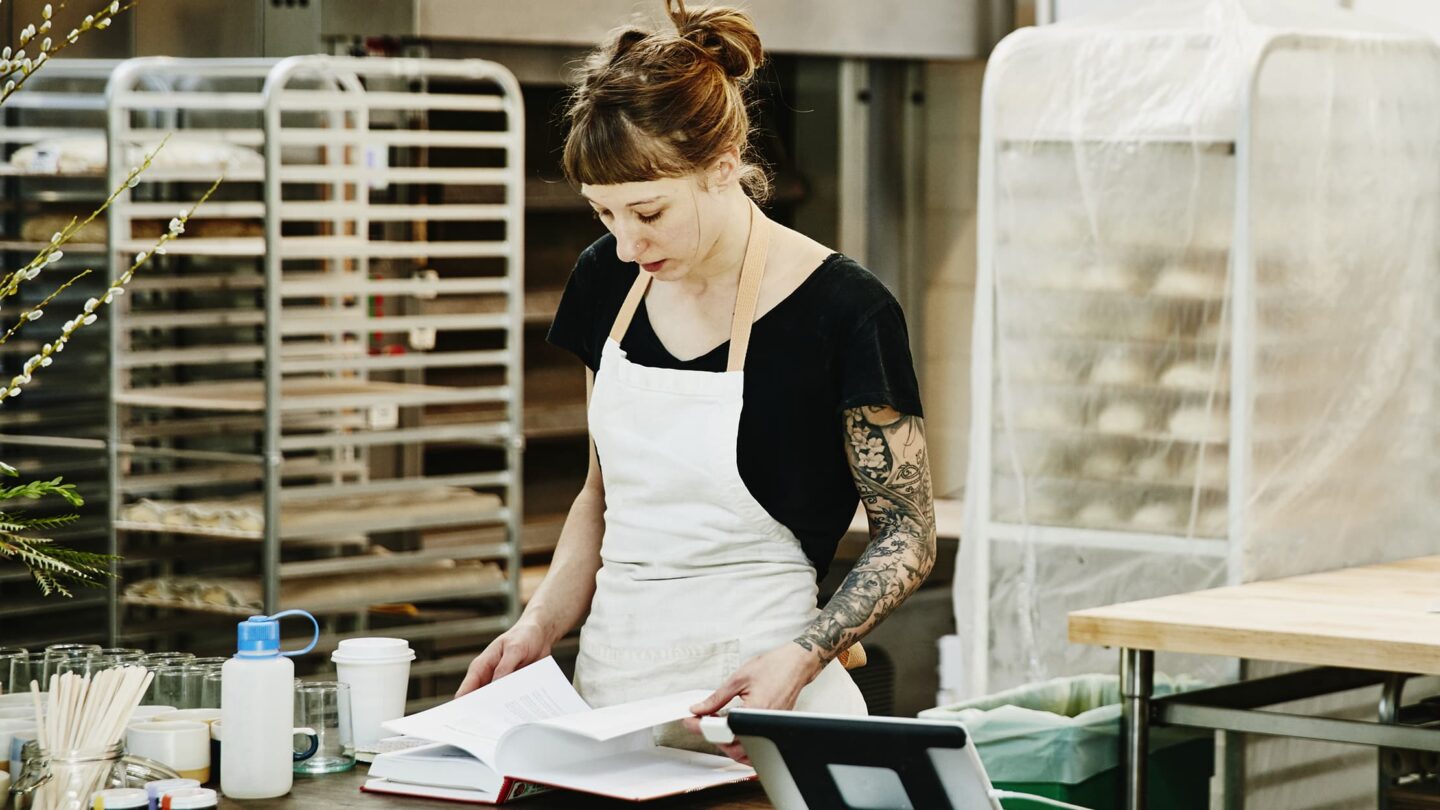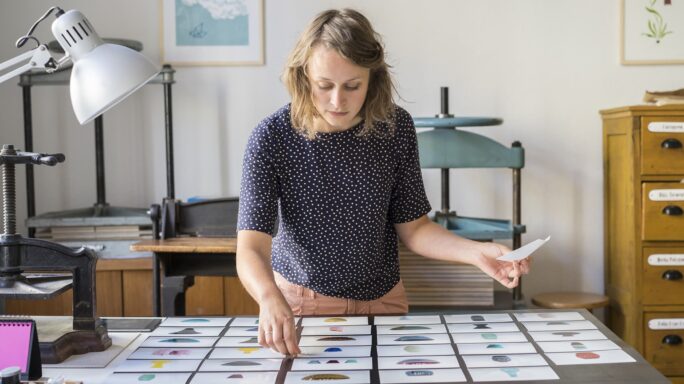Money Matters
Is the VAT Flat Rate Scheme right for your business?
Learn about the VAT Flat Rate Scheme, see if your business is eligible, and discover how Making Tax Digital for VAT affects flat rate VAT.

Getting VAT right is an inescapable part of being in business for all but the smallest organisations.
That’s why you should consider whether you could make your life a little easier by applying to join the VAT Flat Rate Scheme.
Read this article to learn what VAT is, find out about the VAT Flat Rate Scheme and discover if your business is eligible for it.
Here’s what we cover:
- What is VAT?
- VAT Flat Rate Scheme explained
- Is my business eligible for the VAT Flat Rate Scheme?
- How does MTD for VAT affect the flat rate scheme?
- Standard VAT Accounting Scheme vs VAT Flat Rate Scheme
- Pros and cons of the VAT Flat Rate Scheme
- How to register for the VAT Flat Rate Scheme
- Final thoughts on the VAT Flat Rate Scheme
What is VAT?
VAT (value-added tax) is a tax on the sales of goods and services paid by consumers. For example, if a VAT-registered business sells a widget for £1, they will charge the customer £1.20 (assuming the 20% rate applies).
They will then pass on the VAT they collect to the government, typically on a quarterly basis, via a VAT Return.
Most items sold by business attract VAT. This is typically the standard rate of 20%, but a reduced rate of 5% is also used for many items, while there’s also a zero rate. The latter isn’t the same as something being VAT-free because any zero-rated item must still be included in your VAT record keeping).
The taxable turnover threshold that determines whether a business must be registered for VAT is currently £85,000.
At that point, the business must start accounting for the output VAT (what they charge on their sales), and the input VAT (what they pay in purchases). The difference between input and output VAT is what you pay to the government and declare in the VAT Return.
VAT Flat Rate Scheme explained
The HMRC VAT Flat Rate Scheme for small businesses, including smaller limited companies, has existed since the 2002 Budget.
It’s a simplification intended to relieve small business owners of some of the administrative burden involved with preparing VAT Returns.
Instead of accounting for input and output VAT, you simply pay a set rate as a percentage of your turnover. This rate varies, depending on what you do.
There’s also a higher flat rate of 16.5% for businesses considered to be limited cost traders. This was introduced to crack down on what the government felt were people abusing the scheme. These businesses spend little on goods, so had very little equivalent input VAT.
Nonetheless, it’s still an option to be considered if you want simpler VAT accounting.
A limited cost trader is defined as one whose VAT-inclusive expenditure on goods is either less than 2% of their VAT-inclusive turnover in a prescribed accounting period, or greater than 2% of their VAT-inclusive turnover, but less than £1,000 per annum.
Making Tax Digital for VAT software
Discover how Sage Accounting can help you get your MTD for VAT submission right, calculate your bill and submit your VAT Return with ease.

Is my business eligible for the VAT Flat Rate Scheme?
To be eligible to join the VAT Flat Rate Scheme, your business must be VAT-registered and expect your VAT taxable turnover to be £150,000 or less (excluding VAT) in the next 12 months.
You have to leave the flat rate tax scheme if, on the anniversary of joining, your turnover in the past 12 months was more than £230,000 (including VAT) or if you expect it to be in the coming 12 months.
Alternatively, your business may wish to cancel its VAT registration if your turnover (excluding VAT) falls below £85,000.
The introduction of the 16.5% higher flat rate in 2017 may have reduced some of the attractiveness of the VAT Flat Rate Scheme to small businesses.
However, it’s still important that you carefully consider whether it would be better for you to sign up for the scheme rather than the Standard VAT Accounting Scheme if you either want, or need, to become VAT-registered.
How does MTD for VAT affect the flat rate scheme?
With Making Tax Digital for VAT, a lot more businesses may find they have to account for their VAT using software, and need to keep VAT accounting records digitally.
This is a great opportunity to bring your accounting up to date, and get the benefits of the latest technology. You can reduce admin, make life easier, and do more of what you love.
Just as the flat rate scheme aims to simplify VAT accounting, the rules when it comes to MTD for VAT are also a little simpler compared to that for standard VAT accounting.
You need to keep fewer digital records. Specifically, you don’t need to keep digital records of:
- Purchases, unless they’re capital expenditure on which you intend to claim input tax
- Relevant goods used to determine if you need to apply the limited cost business rate.
Standard VAT Accounting Scheme vs VAT Flat Rate Scheme
Assuming the standard rate of VAT is applied with the Standard VAT accounting Scheme, your business must pay the 20% tax that it charged on eligible sales in the previous quarter to HMRC.
Yet, you can also reclaim the VAT that you make on your purchases.
As a result, the amount of VAT that your business pays or claims back from HMRC is usually the difference between the VAT charged by your business to its customers and the VAT that your business pays on its own purchases.
With the VAT Flat Rate Scheme, your business pays a fixed rate of VAT to HMRC and can keep the difference between what you charge your customers and what you pay to HMRC.
You can’t reclaim VAT on your purchases, however, except for certain capital assets costing more than £2,000.
Although limited cost businesses are restricted to a higher fixed rate of 16.5%, those businesses that don’t fall into the limited cost category can apply fixed VAT flat rates ranging from 4% to 14.5% to their gross turnover, including VAT, depending on the business sector or type.
An advertising agency would apply a fixed VAT flat rate of 11%, for example, with that figure falling to 9% for a textile manufacturer.
There are a number of other VAT schemes, such as the cash accounting scheme, that might be worth exploring too.
Pros and cons of the VAT Flat Rate Scheme
Simon Dolan, founder of Dolan Accountancy, believes the HMRC Flat Rate Scheme continues to offer the benefits of less administration for business owners and a potential boost to profits.
Once you know how to complete the online form, accounting for flat rate VAT is a fairly straightforward process since filling in a flat rate VAT return is usually easier than filling in a standard rate VAT return.
“You will only need to tell HMRC how much you have charged in VAT in total,” he says.
“There is no need to reconcile your receipts. There is also the opportunity to earn money from the flat rate scheme.
“For example, if you charge 20% VAT and you pay a flat rate percentage of 16.5% on gross sales, you keep the difference.
“In addition, if you are a new business, you can benefit from an extra 1% discount in your first year of trading.”
The main disadvantage of the VAT Flat Rate Scheme, compared with the Standard VAT Accounting Scheme, is that a business can’t reclaim VAT on its purchases.
“Depending on your business, if you buy stock or you have a high amount of VATable expenses, you can’t get the VAT back,” Simon explains.
Wondering whether the VAT Flat Rate Scheme is the best option for your business?
Simon advises you to calculate whether the amount of VAT you could reclaim from your monthly expenses would outweigh the discount you get from participating in the scheme.
Graham Elliott is the director of City & Cambridge Consultancy. He says one potential pitfall for businesses that use the VAT Flat Rate Scheme is most of a company’s ‘exempt’ income – income it might earn from leasing out commercial land or property, for example – is taxed on the flat rate, with bank account interest being a notable exception.
“Most exempt income is taxed on the flat rate, which is a major trap,” he says. “In fact, this also applies to zero-rated and reduced-rated supplies.”
Another challenge for some businesses is identifying the correct VAT flat rate, based on their business type. This is because it is not always clear what trade class a business falls into.
“For many, the trade class is easy,” says Graham. “But, for some, it is difficult because the classification is geared towards simple, mainstream trades.
“HMRC refuses to decide on the scheme user’s behalf but can challenge the choice that the scheme user makes.”
Zoe Gibbons, a partner at Perrys Chartered Accountants, also points out that the likely growth rate of your business should be taken into account.
If the revenue of your business was likely to fast exceed the upper limit of £230,000, you would soon have to leave the Flat Rate Scheme anyway.
She says: “Your business should consider its business plan and forecast turnover figures because if it is expecting to grow quickly, it may be more beneficial to set up under the standard scheme initially to get into good practice.”
The subtleties involved mean that choosing the VAT Flat Rate Scheme above the Standard VAT Accounting Scheme is not necessarily a straightforward taxation decision.
For this reason, Zoe believes you should discuss your options with your accountant if you have one.
She says: “As each business is different, and will have a different set of circumstances, and VATable outputs and inputs, it is important to speak to your accountant to confirm which scheme would be most beneficial for the business, both from an administrative and a tax point of view.”
How to register for the VAT Flat Rate Scheme
Your business needs to be registered for VAT in order to join the VAT Flat Rate Scheme. It’s possible to apply by post, phone or email but the easiest way is probably to fill in the online application form VAT600FRS.
To fill in the form, you’ll need to following information:
- Business name
- Business address (you just need to highlight whether it’s located in the UK or not)
- Telephone number
- VAT registration number
- Details on your main business activity
- The flat rate percentage you’ll use
- The date you’d like to start using the VAT Flat Rate Scheme (HMRC will notify you of the date but you can opt for another date if necessary – you’ll have to highlight the reason for your new date)
To apply by post, you will need to download the form, fill it in and send it to the National Registration Service at: HM Revenue & Customs, National Registration Unit, Imperial House, 77 Victoria Street, Grimsby, DN31 1DB.
For phone applications, contact the HMRC VAT Helpline on 0300 200 3700. Email applications can be made by sending a completed VAT600FRS form to [email protected].
Final thoughts on the VAT Flat Rate Scheme
Ultimately, the question of whether the VAT Flat Rate Scheme is right for your business will depend on:
- What your company does (that will determine the flat rate VAT sector and flat rate VAT tax rate that apply)
- What kinds of VATable outputs and inputs the business has
- How quickly its revenues might surpass the flat rate VAT limit
- Whether it earns ‘exempt income’.
If you have access to an accountant, they will be able to help you make the decision that is most appropriate for your business circumstances.
Editor’s note: This article was first published in November 2018 and has been updated for relevance.
A guide to Making Tax Digital for VAT
Need help with Making Tax Digital? Download this free guide to learn about MTD for VAT, so you can send your VAT Returns in line with HMRC's requirements.








Ask the author a question or share your advice